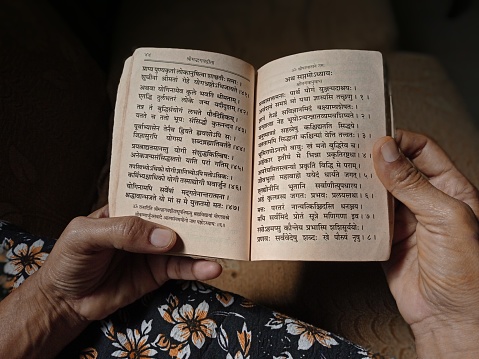Where can I learn to speak Sanskrit outside of school?
Sanskrit संस्कृतम् is a classical language of South Asia belonging to the Indo-Aryan branch of the Indo-European languages, that came into existence in South Asia after its predecessor languages diffused there from the northwest, in the late Bronze Age. Sanskrit generally connotes several Old Indo-Aryan varieties. The most archaic of these is Vedic Sanskrit found in the Rig Veda, a collection of 1,028 hymns composed between 1500 BCE and 1200 BCE by Indo-Aryan tribes migrating east from what today is Afghanistan across northern Pakistan and into northern India.
Sanskrit is the sacred language of Hinduism, the language of classical Hindu philosophy, and of historical texts of Buddhism and Jainism. Sanskrit was a link language in ancient and medieval South Asia, and spread of Hindu and Buddhist culture to Southeast Asia, East Asia and Central Asia in the early medieval era. Vedic Sanskrit interacted with the preexisting ancient languages of the subcontinent, absorbing names of newly encountered plants and animals; in addition, the ancient Dravidian languages influenced Sanskrit’s phonology and syntax. We can witness the lasting impact Sanskrit has had on the languages of South Asia, Southeast Asia and East Asia, especially in their formal and learned vocabularies, owing to the significance it enjoyed as a language of religion, high culture, and of the political elites in some of these regions.
“Sanskrit” can also more narrowly refer to Classical Sanskrit, a refined and standardized grammatical form that emerged in the mid-1st millennium BCE and was codified in the most comprehensive of ancient grammars, the Aṣṭādhyāyī (“Eight chapters”) of Pāṇini. The greatest dramatist in Sanskrit Kālidāsa wrote in classical Sanskrit, and the foundations of modern arithmetic were first described in classical Sanskrit. The two major Sanskrit epics, the Mahābhārata and the Rāmāyaṇa, however, were composed in a range of oral storytelling registers called Epic Sanskrit which was used in northern India between 400 BCE and 300 CE, and roughly contemporary with classical Sanskrit. In the following centuries Sanskrit became tradition bound, stopped being learned as a first language, and ultimately stopped developing as a living language.
Its interesting to note that, the hymns of the Rigveda are notably similar to the most archaic poems of the Iranian and Greek language families, the Gathas of old Avestan and Iliad of Homer. As the Rigveda was orally transmitted by methods of memorisation of exceptional complexity, rigour and fidelity, as a single text without variant readings, its preserved archaic syntax and morphology are of vital importance in the reconstruction of the common ancestor language Proto-Indo-European. Sanskrit does not have an attested native script: from around the turn of the 1st-millennium CE, it has been written in various Brahmic scripts, and in the modern era most commonly in Devanagari.









